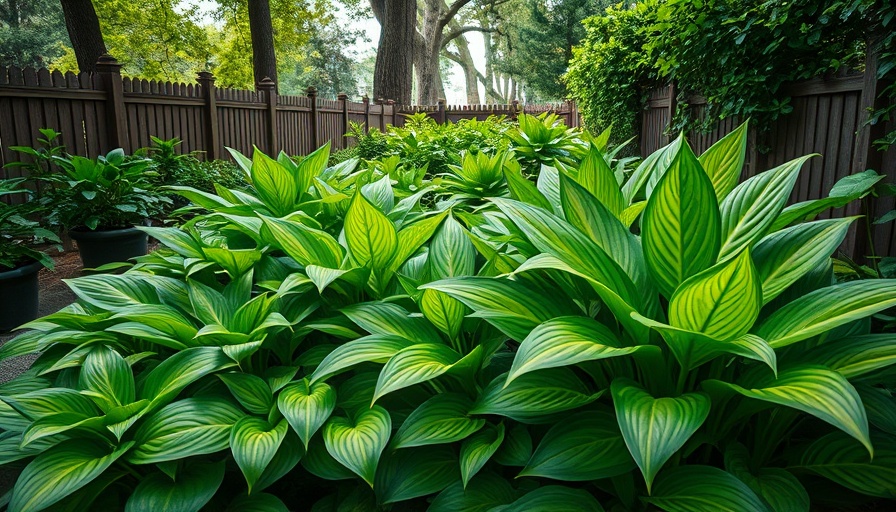
Lighting Up the Shade: Transform Your Garden Spaces
Gardens can often be an oasis, but for those with shaded spaces, knowing what plants to choose can be daunting. Many homeowners find themselves eyeing those sun-soaked flower beds while their shaded corners appear lifeless. Yet, the reality is that shady areas can thrive just as brilliantly with the right selection of plants. By embracing nature's palette of foliage that prefers, even thrives in less sunlight, you can transform these darker corners into stunning displays of greenery and color.
The Classics: Hostas and Ferns
What better place to start than with classics? Hostas, often dubbed the quintessential shade plant, come in a mesmerizing range of colors and styles—from lush greens to striking blues. They provide bold textures and can turn a simple garden into an enchanting scene. Pair them with ferns, which contribute a wild, organic feel to your space with their cascading fronds. Their compatibility makes them a perfect duo, benefitting from the same shady conditions while enhancing each other's beauty.
Bringing Drama with Hydrangeas and Caladiums
For those who crave a splash of color, hydrangeas are a must-have. Their immense blooms not only brighten shaded spaces but add contrast with their varied hues of blue and pink. Whether you're planting them against a wall or around large trunks, they can serve as anchor points in your garden design.
Additionally, consider caladiums for an explosion of color that demands attention. Their heart-shaped leaves display artistic patterns of pinks, reds, and whites, making them ideal for pots or as accents by pathways. These dramatic foliage plants can provide color where other flowering plants may falter.
Unique Ground Cover Options: Foamflower and Lungwort
Ground cover plants like foamflower and lungwort can play an integral role in your shade garden's foundation. Foamflower offers a lush, dense carpet that's perfect for difficult-to-plant areas while its delicate blooms in spring add a touch of elegance. Conversely, lungwort brings intrigue with its spotted leaves and early-season flowers, setting itself apart with unique visual elements that entice viewers. Both of these options not only cover soil but also create layers of texture, which are valuable for both aesthetic appeal and maintaining soil health.
Tips for Successful Shade Planting
When planning a shade garden, it's important to understand the specific conditions of each area. Assess moisture levels, soil quality, and light exposure to choose the best plants. Shade doesn’t mean a lack of beauty; quite the opposite! Join various plant types, creating layers of foliage that differ in height and texture, from upright hostas to cascading ferns. Incorporate pots and raised beds if you're working with minimal ground space—this allows for greater versatility while maximizing the visual impact of your chosen plants.
Injecting Personality with Creativity
Don't shy away from blending bold visuals with practical planting. Utilize containers to fill in gaps with eye-catching plants that attract pollinators. Mix hardy perennials with less demanding varieties for an evolving garden that brings life through the seasons. By selecting a diversity of plants, not only do you enhance the design of your outdoor spaces, but you also create microhabitats that contribute to local biodiversity.
Conclusion: Embracing the Shade
Taking advantage of shade-loving plants doesn’t just enhance those often overlooked areas; it creates lush retreats that invite relaxation and contemplation. Whether you are a seasoned gardener or just starting your journey, incorporating these plants can lead to revitalized outdoor spaces.
So, why not take the next step? Begin planning your shade garden today—lighting up the darkness has never been easier! With the right mix of shade-loving plants, you're sure to create a haven that brightens up your home and grounds.
 Add Row
Add Row  Add
Add 




 Add Row
Add Row  Add
Add 

Write A Comment